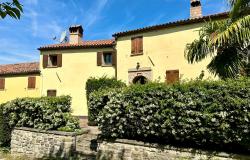 A new Italian documentary tells the extraordinary tale of a fourteenth-century galley resting at the bottom of Venice lagoon. The unique archaeological discovery was made in 2001 at the sunken island of San Marco Boccalama, which was home to a monastery in Medieval times.
A new Italian documentary tells the extraordinary tale of a fourteenth-century galley resting at the bottom of Venice lagoon. The unique archaeological discovery was made in 2001 at the sunken island of San Marco Boccalama, which was home to a monastery in Medieval times.
Monks sank the galley in the early 1300s along with a Venetian transport vessel in the hope that this would fortify the island's banks and stop its gradual slide into the lagoon. The plan did not work. The island was abandoned, used as a cemetery for victims of the Black Plague of 1348 and swallowed up by the lagoon a few decades later.
However, by filling the galley with sand and mud to sink it, the monks' doomed feat of engineering kept the ship in perfect condition for over six centuries. The documentary, entitled "Venezia e la galea perduta" (Venice and the Lost Galley), reconstructs this story.
It also examines the functions the ship would have had before it was scuppered - experts believe the 40-meter long vessel was used both as a battle ship and to carry cargo - and the awesome naval and economic power of the Venetian Republic at that time.
The film, which has been sold to distributors all over the world, also reveals what this archaeological find tells us about how galleys were made in the 13th and 14th centuries. The ship has already been the subject of several books, including a novel.
It was found during an operation to map out the lagoon's underwater archaeological sites and see which were in most urgent need of restoration or excavation. "The restoration of the lagoon has led to the recovery of environments and important archaeological discoveries, giving Venice back important parts of its history that were being lost," said Giancarlo Galan, the president of the Region of Veneto, which supported the production of the documentary.
"With this film we once again show the economic efforts the regional government is making to restore Veneto". Scientists from the Venice Research Consortium (CVR) claim the lagoon is the greatest underwater area of archaeological interest in the world.
There are over 250 sites of significant historic importance, they say, with some finds dating back to Neolithic times.
Unfortunately, pollution, fishing, water transport and marine organisms are eating away at the historical material. As a result, some submerged and semi-submerged sites are decaying rapidly and are at risk of being lost for good, the CVR warns.








